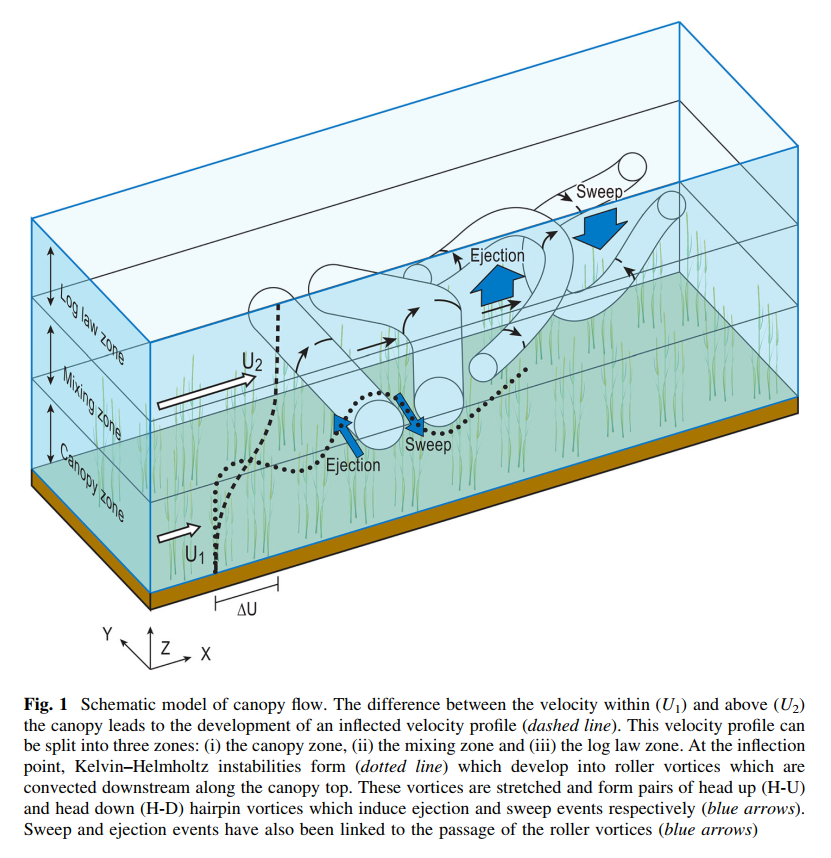Does the canopy mixing layer model apply to highly flexible aquatic vegetation? Insights from numerical modelling
Categories: Turbulence
Author: Timothy I. Marjoribanks1,2 • Richard J. Hardy2 • Stuart N. Lane3 • Daniel R. Parsons4
Year: 2017
Abstract
Flow through and above aquatic vegetation canopies is commonly described using a canopy mixing layer analogy which provides a canonical framework for assessing key hydraulic characteristics such as velocity profiles, large-scale coherent turbulent structures and mixing and transport processes for solutes and sediments. This theory is well developed for the case of semi-rigid terrestrial vegetation and has more recently been applied to the case of aquatic vegetation. However, aquatic vegetation often displays key differences in morphology and biomechanics to terrestrial vegetation due to the different environment it inhabits. They investigate the effect of plant morphology and biomechanical properties on flow–vegetation interactions through the application of a coupled LES-biomechanical model. We present results from two simulations of aquatic vegetated flows: one assuming a semi-rigid canopy and the other a highly flexible canopy and provide a comparison of the associated flow regimes. Our results show that while both cases display canopy mixing layers, there are also clear differences in the shear layer characteristics and turbulent processes between the two, suggesting that the semi-rigid approximation may not provide a complete representation of flow–vegetation interactions.
Canopy mixing layer model

The log-law zone above the canopy is unaffected by the additional vegetative drag and therefore the velocity follows the typical logarithmic boundary layer profile 1
The turbulence structure of canopy flows can be split into three distinctive length scales, which correspond to the different velocity profile zones, defined as fine-scale wakes, the active mixing layer and the inactive boundary layer
Reference:
-
Lopez F, Garcia MH (2001) Mean flow and turbulence structure of open-channel flow through nonemergent vegetation. J Hydraul Eng 127(5):392–402 ↩